|  
 
 
 
 
 
 
 
 
 
 | | | | 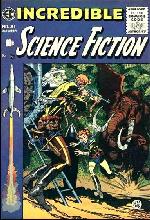

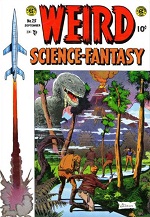

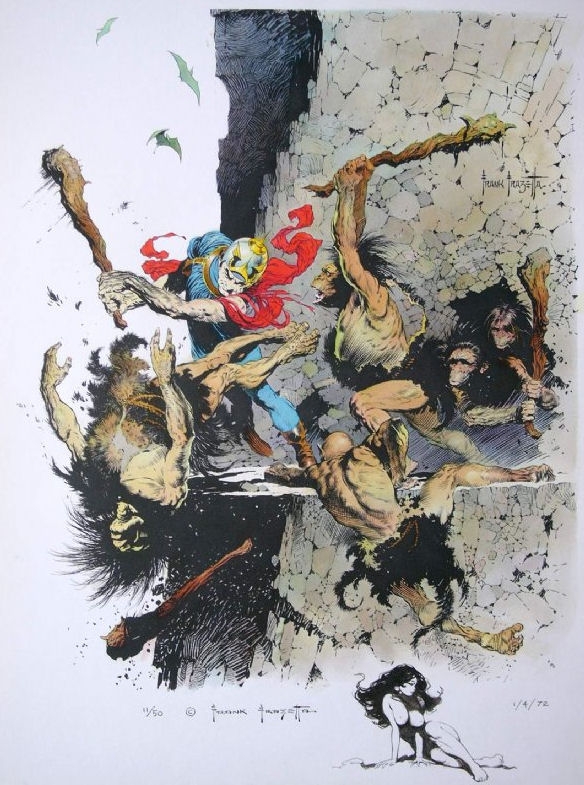 number 11 of 50 hand-colored Frazetta prints of Weird Science-Fantasy 29 number 11 of 50 hand-colored Frazetta prints of Weird Science-Fantasy 29

| | EC Comics (Anthologies)
First time travel: May 1950

The prototypical comic book weird story anthologies were EC’s titles that began in April 1950 with Crypt of Terror. I don’t know whether that title and EC’s other horror comics had any time travel (because I was forbidden from reading those!), but Harry Harrison, Wally Wood and their fellow artists managed some in the titles that were more geared to sf.

I’m aiming for a complete list of EC’s time-travel vignettes, but the list as of now is only partial. The first one I found was in Weird Fantasy 13 (May/Jun 1950), which was actually its first issue. That was part of a ruse to take over a second-class postage permit from A Moon, a Girl . . .Romance (which ended with issue 12). They stuck with that numbering through the fifth issue (number 17) when the postmaster general took note, and the next one was number 6. I did kinda wonder how many of those romance readers were surprised when Weird Fantasy 13 showed up in their mailboxes.

There was a sister title, Weird Science, which began in May/Jun 1952 with issue 12 (taking over the postage permit after the 11th issue of Saddle Romance). It had many time travel stories, starting with “Machine from Nowhere” in issue 14 (the 3rd issue).

Weird Science and Weird Fantasy were not selling that well, so EC combined them into a single title—Weird Science-Fantasy—with issue 23 in March 1954. Alas, there was but one time-travel story, “The Pioneer” in number 25 (Sep 1954), about which EC’s site says A man attempts to be the first to successfully time travel, but there are some casualties on the way. . . .. By the way, the whole run of EC comics would be 4 stars, but it gets an extra ½ star because of Al Williamson’s adaptation of “The Sound of Thunder” in Weird Science-Fantasy 24 and the beautiful Frank Frazetta cover on the final issue (number 29) of Weird Science-Fantasy. The third image to the left is is that Frazetta did of that cover in 1972, with a bonus vamp in the bottom right corner. The cover had a gladiator fighting cave men, but it was not a time-travel story.

In 1955, the Comics Code Authority banned the word “Weird,” so the title became Incredible Science Fiction with number 30 (Jul/Aug 1955). The four-issue run had only one time-travel tale (“Time to Leave” by Roy G. Krenkel in number 31). I just stepped off the path, that’s all. Got a little mud on my shoes! What do you want me to do, get down and pray? I just stepped off the path, that’s all. Got a little mud on my shoes! What do you want me to do, get down and pray? 
| |
| | | | |

 
 
 
 
 
 
 | | | | 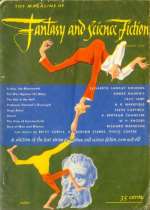 | | “Friday, the Nineteenth”
by Elisabeth Sanxay Holding
First publication: The Magazine of Fantasy and Science Fiction, Summer 1950

 Tired of his marraige, Donald Boyce begins exchanging the odd kiss and soft touch on the hand with his best friend’s wife Molly, all quite innocent until Friday, the nineteenth, when Molly proposes that they have a clandistine rendezvous on Saturday, the twentieth, throwing both of them into a continuous repeat of the nineteenth. Tired of his marraige, Donald Boyce begins exchanging the odd kiss and soft touch on the hand with his best friend’s wife Molly, all quite innocent until Friday, the nineteenth, when Molly proposes that they have a clandistine rendezvous on Saturday, the twentieth, throwing both of them into a continuous repeat of the nineteenth.

A well-written, early time-loop story, and also one of the first two time travel stories (along with “An Ounce of Prevention”) to appear in The Magazine of Fantasy and Science Fiction. “I don’t want to go either. It’s been so wonderful,” she said, “this little time alone together. I love this funny little bar; I’ve loved every moment here. I wish today would never end.” “I don’t want to go either. It’s been so wonderful,” she said, “this little time alone together. I love this funny little bar; I’ve loved every moment here. I wish today would never end.” 
| |
| | | | |

 | | | | 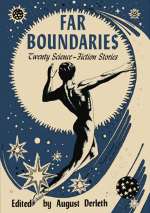 The story also appeared in this 1951 anthology. The story also appeared in this 1951 anthology. | | “An Ounce of Prevention”
by Paul A. Carter (as by Philip Carter)
First publication: The Magazine of Fantasy and Science Fiction, Summer 1950

 By virtue of being on Mars, John Stilson is the last survivor of the human race after the ultimate war, but the Martians have a plan to change all that by sending Stilson back to alter the amount of fissionable material in Earth’s crust. By virtue of being on Mars, John Stilson is the last survivor of the human race after the ultimate war, but the Martians have a plan to change all that by sending Stilson back to alter the amount of fissionable material in Earth’s crust. Wherever in history a decision involving alternatives has to be made, separate and distinct futures branch off, rooted in that choice. There is a world in which the American colonies became a nation, and a world in which they remained under British rule. There is a world in which Franklin Roosevelt was four times elected President, and a world in which the assassination attempt against him in Miami was successful. There is no “might have been,” for the events that “might have been” have actually taken place, somewhere in time—not before, not after, but beside their alternatives. . . . Wherever in history a decision involving alternatives has to be made, separate and distinct futures branch off, rooted in that choice. There is a world in which the American colonies became a nation, and a world in which they remained under British rule. There is a world in which Franklin Roosevelt was four times elected President, and a world in which the assassination attempt against him in Miami was successful. There is no “might have been,” for the events that “might have been” have actually taken place, somewhere in time—not before, not after, but beside their alternatives. . . . 
| |
| | | | |

 
 
 
 | | | | 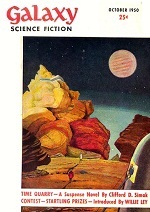 | | Time and Again
by Clifford D. Simak
First publication: Galaxy, Oct/Nov/Dec 1950

After twenty years, Ash Sutton reurns in a cracked-up ship without food, air or water—only to report that the mysterious planet that nobody can visit is no threat to Earth. But a man from the future insists that Sutton must be killed to stop a war in time; while Sutton himself, who has developed metaphysical, religious leanings, finds a copy of This Is Destiny, the very book that he is planning to write. It would reach back to win its battles. It would strike at points in time and space which would not even know that thre was a war. It could, logically, go back to the silver mines of Athens, to the horse and chariot of Thutmosis III, to the sailing of Columbus. It would reach back to win its battles. It would strike at points in time and space which would not even know that thre was a war. It could, logically, go back to the silver mines of Athens, to the horse and chariot of Thutmosis III, to the sailing of Columbus. 
| |
| | | | |

 
 
 
 
 
No Time Travel. Move along. |
“Outside of Time” by Carroll John Daly, Weird Tales, Jan 1950 [stopping time ]

To the Stars by L. Ron Hubbard, Astounding, Feb–Mar 1950 [time dilation ]
aka Return to Tomorrow

“Last Enemy” by H. Beam Piper (paratime), Astounding, Aug 1950 [alternate timelines ]

“S.O.S. . . . in Time” by D.K. Garton (as by Durham Keys), Thrills Incorporated, Oct 1950 [plagiarised from Simak’s The Loot of Time ]

“A Subway Named Mobius” by A.J. Deutsch, Astounding, Dec 1950 [4D spacial topology ]
aka ‘Non-Stop’

| |     |